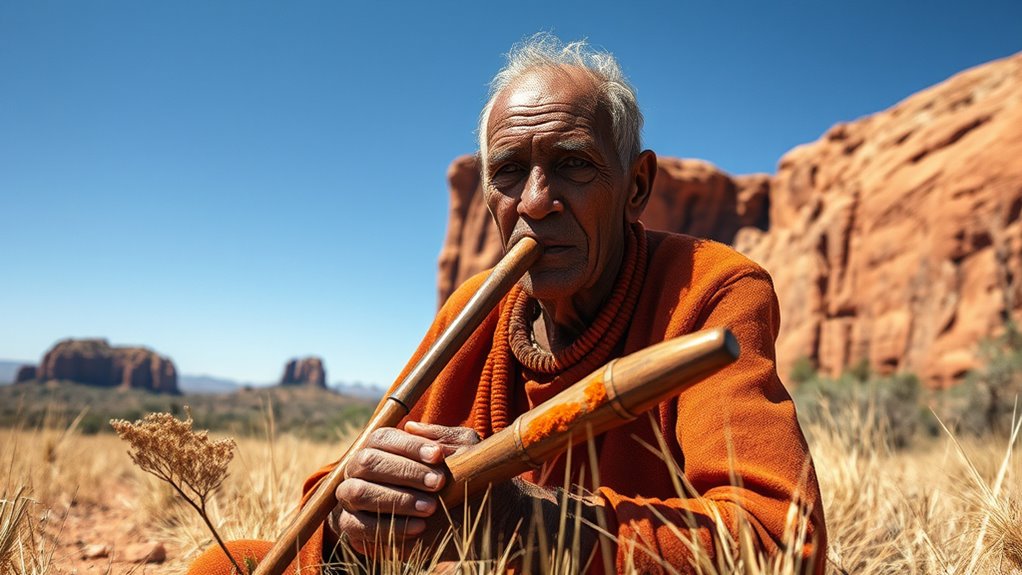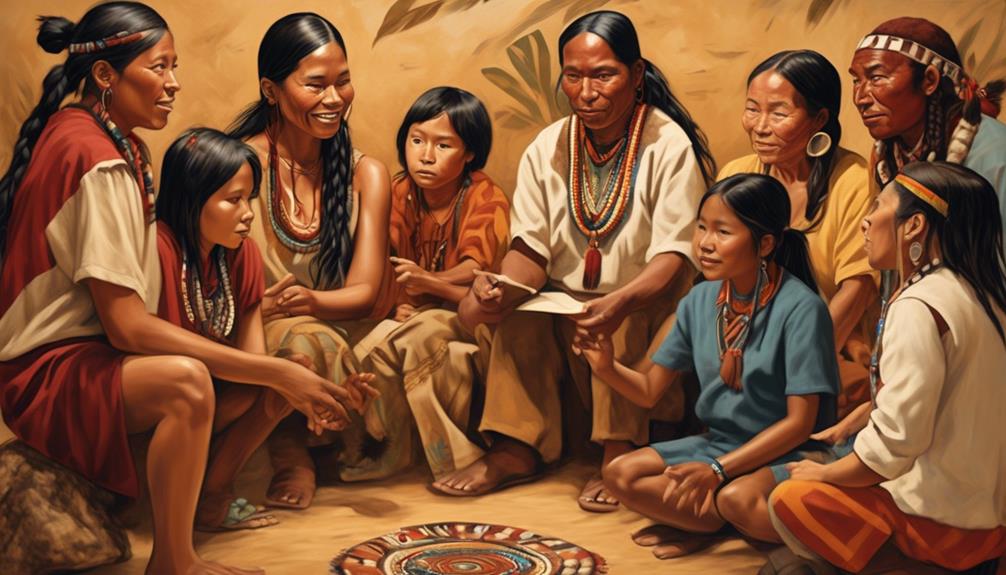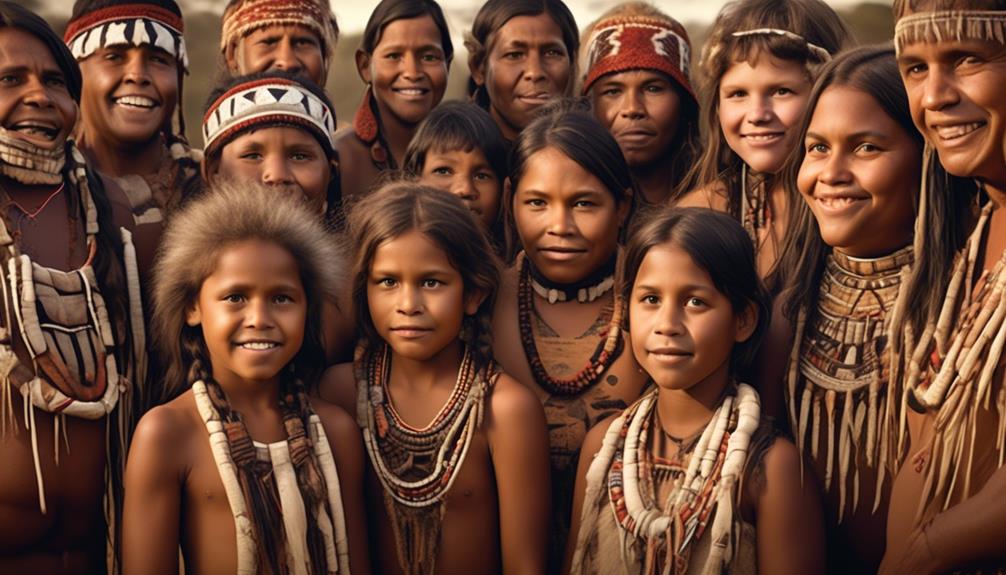Listening to Nyangumarta lets you connect directly with the Pilbara’s ancient culture and stories. As you hear the language, you’ll experience its rich traditions, songs, and ancestral knowledge that’s essential to Indigenous identity. Each word carries deep cultural significance and helps preserve the community’s worldview. Engaging with Nyangumarta supports cultural continuity and understanding. If you keep exploring, you’ll discover even more about the importance of this beautiful language and its enduring legacy.
Key Takeaways
- Listening to Nyangumarta connects listeners with the Pilbara’s rich cultural stories and ancestral wisdom.
- Audio recordings and language programs help preserve and share the language with future generations.
- Community-led events and ceremonies offer authentic opportunities to experience Nyangumarta spoken aloud.
- Engaging with elders’ stories and traditional songs fosters cultural understanding and language revival.
- Supporting initiatives that promote Nyangumarta ensures the language remains vibrant and accessible.

The Nyangumarta language is an Indigenous Australian language spoken by the Nyangumarta people in the northwestern part of Western Australia. This language carries the stories, traditions, and identity of a community that has thrived in the Pilbara region for thousands of years. Today, there’s a growing movement to guarantee that Nyangumarta endures for future generations. You can be part of this effort by supporting initiatives focused on language revival and cultural preservation. These efforts aim to reverse the decline caused by colonization, displacement, and the dominance of English. Preserving language also helps maintain the community’s cultural knowledge, ensuring that ancestral wisdom and practices are passed down. Language revival is at the heart of keeping Nyangumarta alive. Many elders and community leaders recognize that language is more than just words — it’s a vessel for cultural knowledge, ceremonies, and kinship ties. By actively learning, teaching, and documenting the language, community members are working to bridge the gap between generations. Schools and language programs are emerging, offering classes for children and adults alike. These programs are essential because they help young Nyangumarta speakers connect with their heritage and gain pride in their identity. When you support language revival projects, you contribute to a broader movement that empowers Indigenous communities to reclaim their voice and cultural autonomy. Cultural preservation goes hand in hand with language revival. As the language fades, so too do the stories, songs, and traditions embedded in it. Preserving Nyangumarta means safeguarding the community’s unique worldview and history. You can help by participating in or funding cultural initiatives, such as storytelling events, dance, art, and ceremonies that use the language. These activities reinforce the importance of cultural continuity and help younger generations understand their roots. Furthermore, documentation efforts—like recording elders speaking or writing down traditional stories—are essential. They guarantee that even if the language faces challenges, its essence remains accessible and alive. Supporting the Nyangumarta language is a way to honor the resilience of an ancient culture. Your involvement can make a difference, whether through volunteering, donating, or simply spreading awareness about the importance of language revival and cultural preservation. The future of Nyangumarta hinges on community-led efforts that prioritize education, storytelling, and cultural pride. By standing with the Nyangumarta people in these endeavors, you help keep their language vibrant and their cultural identity intact. Ultimately, this isn’t just about saving a language — it’s about safeguarding a rich heritage that offers valuable insights into human history and the enduring spirit of the Pilbara’s Indigenous communities.
Frequently Asked Questions
How Many Nyangumarta Speakers Are Currently Alive?
You’ll find that there are roughly 200 to 300 Nyangumarta speakers alive today. Engaging in linguistic revitalization efforts helps preserve their language and culture. By learning and using Nyangumarta, you contribute to cultural preservation, ensuring this ancient language endures for future generations. Supporting these initiatives keeps the language vibrant, honoring the rich heritage of the Nyangumarta people and maintaining their unique identity in the Pilbara region.
Are There Any Audio Recordings of Authentic Nyangumarta Speech?
You’ll find authentic Nyangumarta speech recordings, which play a vital role in language preservation and cultural significance. While some recordings exist, they’re limited, emphasizing the urgent need to document and maintain this ancient language. Listening to these recordings helps you connect with the Nyangumarta community’s stories and traditions, ensuring their language endures for future generations and fostering a deeper appreciation of their rich cultural heritage.
What Efforts Are Underway to Revitalize the Language?
You can get involved in community initiatives focused on Nyangumarta language preservation, which aim to revitalize this ancient tongue. Local groups are creating educational programs, recording authentic speech, and encouraging elders to pass down their knowledge. These efforts help keep the language alive for future generations, fostering cultural pride and ensuring the Nyangumarta language remains a crucial part of the Pilbara’s heritage.
How Does Nyangumarta Compare to Neighboring Aboriginal Languages?
Imagine walking through the rugged Pilbara landscape, where Nyangumarta’s sounds echo alongside neighboring languages. You notice linguistic similarities in pronunciation and grammar, yet distinct cultural differences shape each tongue’s unique rhythm. Compared to nearby languages, Nyangumarta offers a rich tapestry of shared roots and individual identity. You can feel its deep connection to the land, setting it apart while still weaving into the broader fabric of Aboriginal linguistic diversity.
Can Non-Nyangumarta People Learn the Language Easily?
You can learn Nyangumarta, but language acquisition takes effort and immersion. To truly grasp it, you need cultural immersion—spending time with native speakers and understanding its context. The language’s unique sounds and structure may challenge you initially, but consistent practice and respectful engagement make learning easier. With dedication, non-Nyangumarta people can develop proficiency and connect deeply with the community’s rich cultural heritage.
Conclusion
As you listen to the Nyangumarta language, you realize it’s more than words—it’s a living connection to the land’s secrets. Every phrase holds ancient stories waiting to be uncovered, yet some remain hidden, forgotten in time. Will these voices be lost forever, or can you help preserve this sacred language? The future hangs in the balance, and only if you listen closely can you truly understand the depth of the Pilbara’s ancient spirit.
Mary is a passionate writer who brings creativity and a fresh perspective to our team. Her words have the power to captivate and inspire, making her an essential contributor to our content. Mary’s commitment to storytelling and dedication to promoting Indigenous culture ensures that her work touches the hearts of our readers. We’re fortunate to have her as part of our team.









